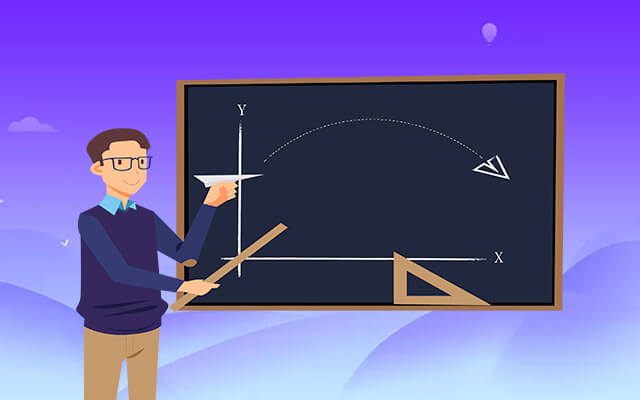剑雅19阅读题回忆版Test 4 Passage 3
剑桥雅思19收集了雅思考试真题共4套题目。羊驼雅思整理了剑雅19考试题Test 4的阅读题Passage 3回忆版,供考生们备考时复习参考。

相关阅读:
READING PASSAGE 3
You should spend about 20 minutes on Questions 27-40. which are based on Reading Passage 3 below.
The Unselfish Gene
A psychologist gives his view on how humans became self-centred There has long been a general assumption that human beings are essentially selfish We're apparently ruthless, with strong impulses to compete against each other for resources and to accumulate power and possessions. lf we are kind to one another, it's usually because we have ulterior motives. lf we are good, it's only because we have managed to control and transcend our innate selfishness and brutality.
This bleak view of human nature is closely associated with the science writer Richard Dawkins, whose 1976 book The Selfish Gene became popular because it fitted so well with - and helped to justify-the competitive and individualistic ethos that was so prevalent in late 20th-century societies. Like many others, Dawkins justifies his views with reference to the field of evolutionary psychology. Evolutionary psychology theorises that present-day human traits developed in prehistoric times, during what is termed the 'environment of evolutionary adaptedness'.
Prehistory is usually seen as a period of intense competition, when life was such a brutal battle that only those with traits such as selfishness, aggression and ruthlessness survived. And because survival depended on access to resources - such as rivers, forests and animals - there was bound to be conflict belween rival groups, which led to the development of traits such as racism and warfare. This seems logical. But, in fact, the assumption on which this all rests - that prehistoric life was a desperate struggle for survival-is false.
It's important to remember that in the prehistoric era, the world was very sparsely populated. According to some estimates, around 15.000 years ago, the population of Europe was only 29.000. and the population of the whole world was less than half a million. Humans at that time were hunter-gatherers: people who lived by hunting wild animals and collecling wild plants. With such small population densiies, it seems unlikely that prehistoric hunter-gatherer groups had to compete against each other for resources or had any need to develop ruthlessness and competitiveness, or to go to war.
There is sianificant evidence to back this notion from contemporary hunter-gatherer groups, who live in the same way as prehistoric humans did.As the anthropologist Bruce Knauft has remarked, hunter-gatherers are characterised by'extreme political and sexual egalitarianism'. Knauft has observed that individuals in such groups don't accumulate property or possessions and have an ethical obligation to share everything. They also have methods of preserving egalitarianism by ensuring that disparities of stalus don't arise.
The !Kung people of southern Africa, for example, swap arrows before going hunting and when an animal is killed, the acclaim does not go to the person who fired the arrow, but to the person the arrow belongs to, And if a person becomes too domineering, the other members of the group ostracise them, exiling the offender from society. Typically in such groups, men do not dictate what women do. Women in hunter-gatherer groups worldwide often benefit from a high level of autonomy, being able to select their own marriage partners, decide what work they do and work whenever they choose to. And if a marriage breaks down, they have custody rights over their children.
Many anthropologists believe that societies such as the !Kung were normal until a few thousand years ago, when population growth led to the development of agriculture and a settled lifestyle. In view of the above, there seems little reason to assume that traits such as racism, warfare and male domination should have been selected by evolution-as they would have been of little benefit in the prehistoric era. individuals who behaved selfishly and ruthlessly would be less likely to survive, since they would have been ostracised from their groups.
It makes more sense, then, to see traits such as cooperation, egalitarianism, altruism and peacefulness as innate characteristics of human beings. These were the traits that were prevalent in human life for tens of thousands of years. So presumably these traits are still strong in us now.
But if prehistoric life wasn't really as brutal as has often been assumed, why do modern humans behave so selfishly and ruthlessly? Perhaps these negative traits should be seen as a later development, the result of environmental and psychological factors.
Research has shown repeatedly that when the natural habitats of primates such as apes and gorillas are disrupted, they tend to become more violent and hierarchical.
So, it could well be that the same thing has happened to us. l believe that the end of the hunter-gatherer lifestyle and the advent of farming was connected to a psychological change that occurred in some groups of people. There was a new sense of individuality and separateness, which led to a new selfishness, and ultimately to hierarchical societies, patriarchy and warfare. At any rate, these negative traits appear to have developed so recently that it doesn't seem feasible to explain them in adaptive or evolutionary terms.
Test 4
Questions 27-30
Choose the correct letter, A, B, C or D.
Write the correct letter in boxes 27-30 on your answer sheet.
27 What is the writer doing in the first paragraph?
A setting out two opposing views about human nature
B justifying his opinion about our tendency to be greedy
C describing a commonly held belief about people's behaviour
D explaining why he thinks that humans act in a selfish manner
28 What point is made about Richard Dawkins' book The Selfish Gene?
A Its appeal lay in the radical nature of its ideas.
B Its success was due to the scientific support it offered.
C It presented a view that was in line with the attitudes of its time.
D It took an innovative approach to the analysis of human psychology.
29 What does the writer suggest about the prehistoric era in the fourth paragraph?
A Societies were more complex than many people believe.
B Supplies of natural resources were probably relatively plentiful.
C Most estimates about population sizes are likely to be inaccurate.
D Humans moved across continents more than was previously thought.
30 The writer refers to Bruce Knauft's work as support for the idea that
A selfishness is a relatively recent development in human societies.
B only people in isolated communities can live in an unselfish manner.
C very few lifestyles have survived unchanged since prehistoric times.
D hunter-gatherer cultures worldwide are declining in number.
Questions 31-35
Complete the summary below.
Choose ONE WORD ONLY from the passage for each answer.
Write your answers in boxes 31-35 on your answer sheet.
Contemporary hunter-gatherer societies
| Bruce Knauft's research shows that contemporary hunter-gatherer
societies tend to exhibit a high level of 31....... in all areas of
life. in these cultures, distributing resources fairly among all members
is a moral obligation. These societies also employ strategies to
prevent differences in 32 ..……....occurring: for example, the !Kung
follow a custom whereby the credit for one person's success at 33
.....………. is given to another member of the group. Individuals who
behave in a 34 .…………..manner are punished by being excluded from the
group, and women have a considerable amount of 35.... in choices
regarding work and marriage. Questions 36-40 Do the following statements agree with the views of the writer in Reading Passage 3? In boxes 36-40 on your answer sheet, write YES if the statement agrees with the views of the writer NO if the statement contradicts the views of the writer NOT GIVEN if it is impossible to say what the writer thinks about this 36 Some anthropologists are mistaken about the point when the number of societies such as the !Kung began to decline. 37 Humans who developed warlike traits in prehistory would have had an advantage over those who did not. 38 Being peaceful and cooperative is a natural way for people to behave. 39 Negative traits are more apparent in some modern cultures than in others. 40 Animal research has failed to reveal a link between changes in the environment and the emergence of aggressive tendencies. |
相关推荐
热门话题:





